Europe Aseptic Packaging Market Size
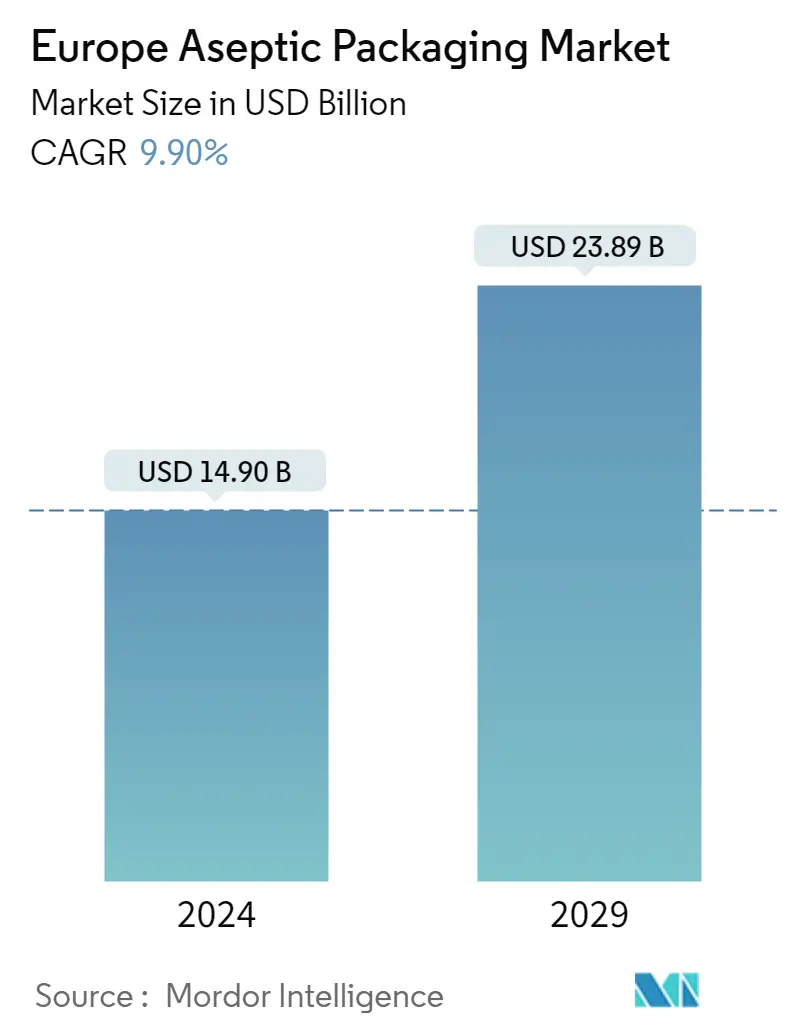
| Study Period | 2019 - 2029 |
| Base Year For Estimation | 2023 |
| Market Size (2024) | USD 14.90 Billion |
| Market Size (2029) | USD 23.89 Billion |
| CAGR (2024 - 2029) | 9.90 % |
| Market Concentration | Medium |
Major Players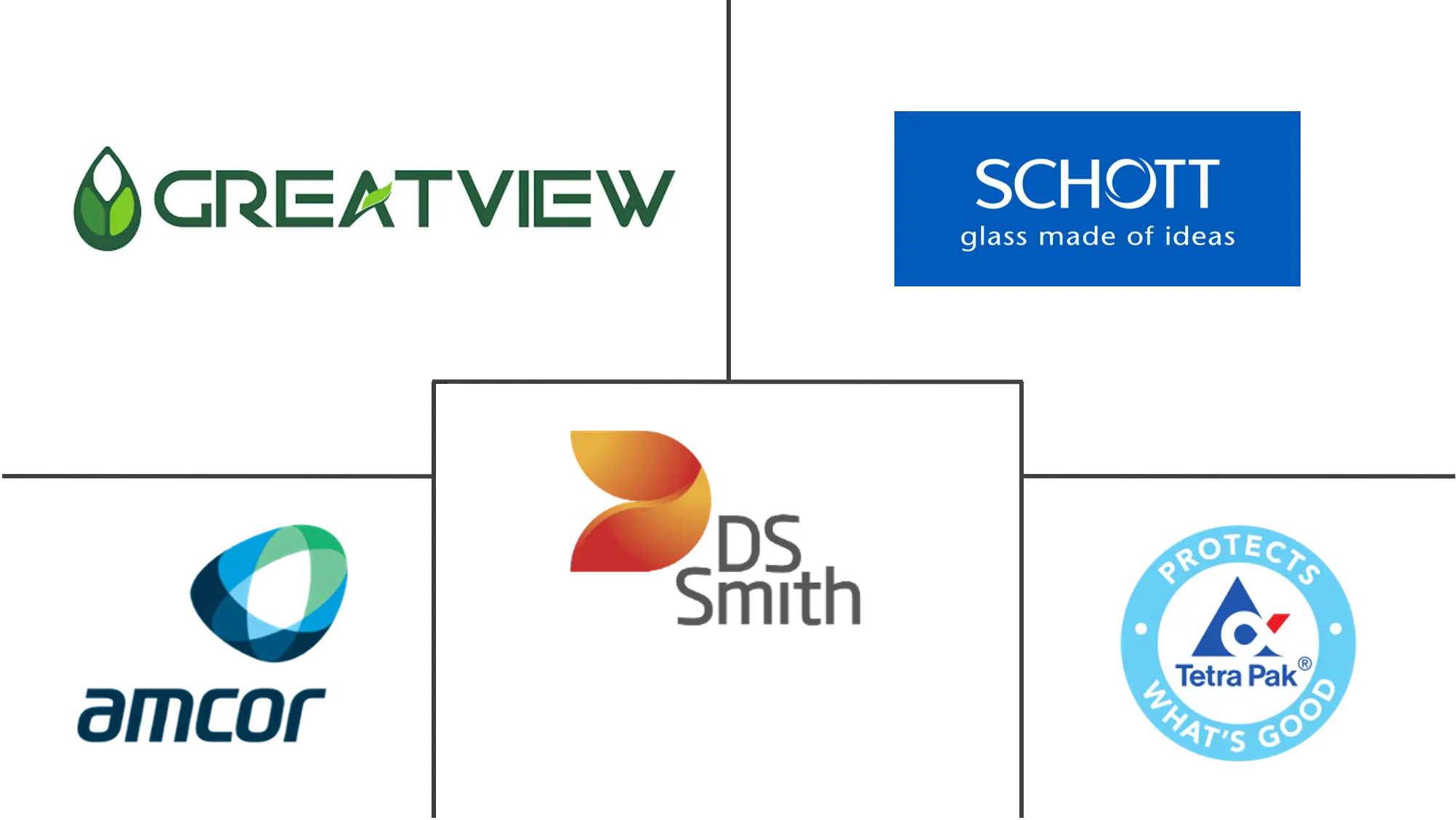
*Disclaimer: Major Players sorted in no particular order |
Europe Aseptic Packaging Market Analysis
The Europe Aseptic Packaging Market size is estimated at USD 14.90 billion in 2024, and is expected to reach USD 23.89 billion by 2029, growing at a CAGR of 9.90% during the forecast period (2024-2029).
The European region has been one of the leading markets for aseptic packaging products and equipment, owing to the dominance of local companies in the aseptic packaging industry. Although the market volumes have been static in most of the areas in the region, however, growing innovations are expected to expand the industrial applications.
- High-pressure processing is also taking a significant step forward in the region with the bulk processing systems in the region that unpackages the technology in order to allow a range of packaging formats. These bulk systems can be used in conjunction with an aseptic filling system to guarantee the shelf-life extension, which in turn, is expected to develop space for aseptic packaging in the region.
- Moreover, according to an earlier European Consumer Packaging Perceptions Survey of 7,000 shoppers, three-quarters of the consumers said that the environmental impact of a product's packaging significantly affects the purchasing decisions, and 90% want the packaging to be made that is easily recyclable. Thus sustainability is also playing a major role in new product developments in the market.
- Companies such as Nestle are also collaborating with SIG to research more sustainable materials regarding packaging. This goes in line with Nestle's strategy to tackle plastic pollution. In May 2020, the companies, Logitech, and other industry partners committed to providing CHF 5 million over ten years to support sustainable packaging materials research.
- Further, Owing to the spread of COVID-19, the market is expected to witness significant growth. Due to the pandemic, customers have shifted towards online retail as well as panic stocking, which led to an increased demand for essential food items such as milk, baby food, and vegetables.
- Moreover, the concerns regarding food hygiene due to Covid-19 have been increasing the demand for aseptic packaging. In the coming years, the customers are expected to prefer better packaging to prevent themselves from such diseases, which would compel the vendors to think on the lines of sustainable aseptic packaging.
Europe Aseptic Packaging Market Trends
This section covers the major market trends shaping the Europe Aseptic Packaging Market according to our research experts:
Increasing Demand for Longer Shelf Life of Products
- Consumers have been demanding products with extended shelf life and easier usage. This has necessitated the companies to develop alternate packaging solutions. Shelf life has been an important aspect of the product. With companies looking to expand their product offerings with less dependency on sophisticated cold storage chains, producing packages that provide longer shelf life has become imperative.
- The shelf life can be increased by protecting the products from potential deteriorating agents, such as oxygen, moisture, and microbes. In order to protect their products, companies need a packaging solution that can achieve the same and is also cost-effective. Reducing wastage throughout the food supply chain is likely to become a crucial activity in order to reduce the environmental impact of agriculture and to serve the increasing food demand. Therefore, investing in efficient, low-cost, and sustainable processing and packaging solutions to increase the shelf life of products (especially dairy, baby food, and nutraceuticals) is a viable solution, thus augmenting the requirement of aseptic packaging.
- Changing lifestyles and the consequent dependence of consumers on processed, packaged, and precooked food is increasing the demand for aseptic packaging solutions. The advent of the supermarket culture has also altered the landscape of shopping and has increased the need for packaging, especially in food and beverage products. The altering lifestyle of people has resulted in the shift from home-cooked to ready-to-eat products. In addition to this ease of use, these products should also be packaged in such a way to ensure they are fresh and uncontaminated.
- Food packaging has no longer just a passive role in protecting and marketing a food product. The emphasis on the decrease of the use of preservatives is also a driving factor for the use of aseptic packaging as aseptic food preservation methods enable processed food to be kept for a longer period of time without preservatives as long as they are not opened.
- Moreover, with the growing population in the region, the production of milk is increasing as cow milk is a part of the daily diet. For instance, according to Food and Agriculture Policy Research Institute, the production of cow milk in the European Union in 2020 accounted for 157,500 thousand metric tons compared to 155,200 thousand metric tons in 2019. This demands a longer shelf life of up to 6 months, and aseptic packaging is of high use as the packaging is sterilized prior to the fillion with UHT-treated milk.
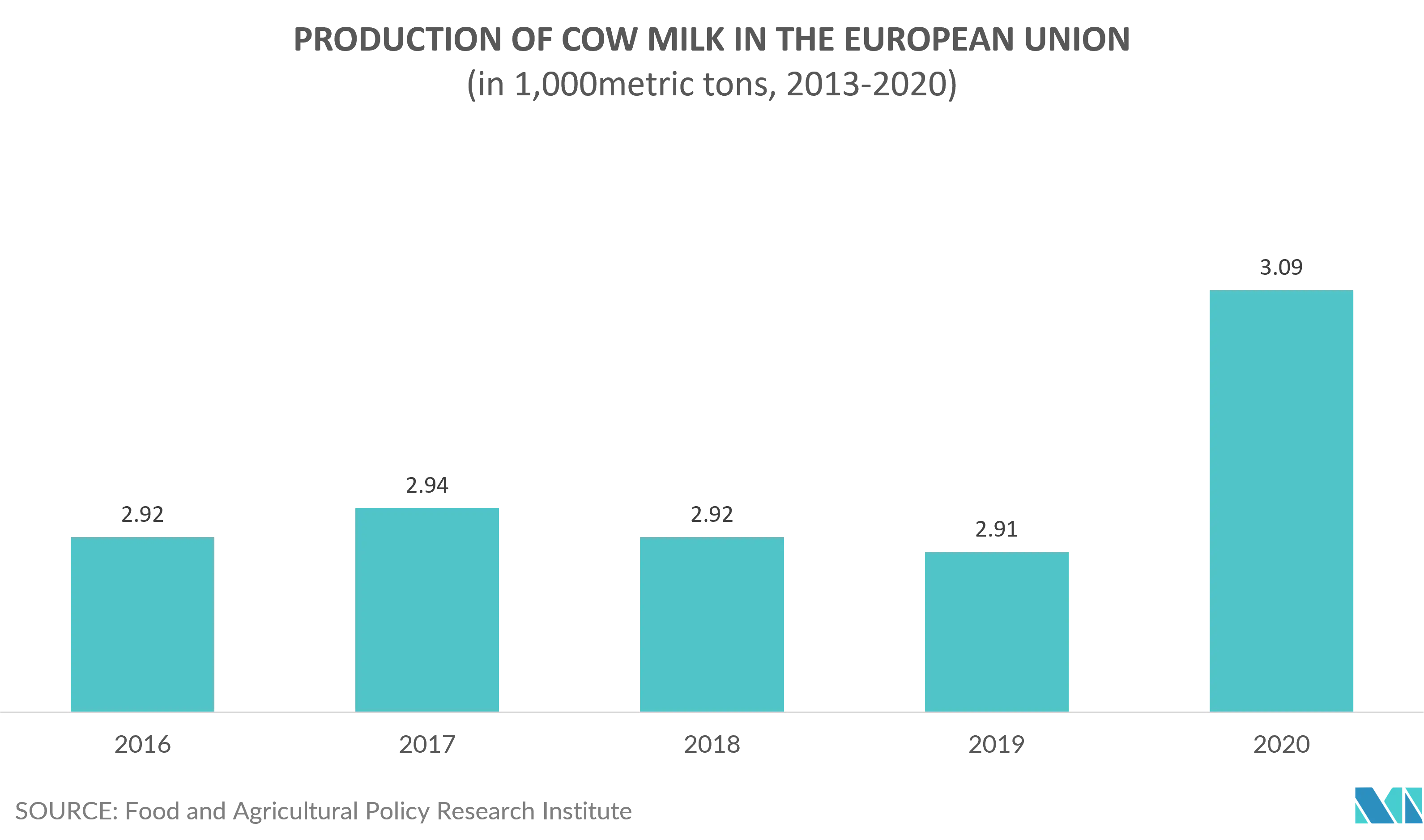
Pharmaceutical sector is expected to higher witness growth during the forecast
- Prefillable syringes overcome disadvantages of parenteral drug delivery, such as lack of convenience, affordability, accuracy, sterility, and safety. These syringes enable easy management of chronic diseases, such as Diabetes and Rheumatoid Arthritis, which is expected to boost the use of auto-injectors and pen injectors over the forecast period. Thus, the growing prevalence of Diabetes and other chronic diseases in the European region is expected to fuel the market demand over the forecast period.
- Prefilled syringes are emerging as one of the fastest-growing choices for unit dose medication as the pharmaceutical industry seeks new and more convenient drug delivery methods. Also, Pharmaceutical companies are minimizing drug waste and increasing product life span, while patients are able to self-administer injectable drugs at their homes instead of the hospital.
- According to Public Health England, the distribution of people registered with type 2 diabetes in England (in 2020) by age accounted for 4.1% (40 and under), 43.1%(age 40-64), 37.8% (for age 65-79) and 15.1% (for age over 80%). Thus, increasing growth of the insulin market is expected to drive the prefillable syringes market that would further aid the growth of the Aseptic Packaging Market.
- Around 80% of the vials and ampoules are made from glass, owing to their suitability with varied drug combinations, but they face challenges like delamination, breakage, etc. Alternative plastic vials, like Cycle Olefin Polymer (COP) and Cycle Olefin Co-Polymer (COC) formats, are likely to gain significant market share over the next five years. Major players, such as Schott and Gerresheimer, possess experience in COC for pharmaceutical applications. Such developments are driving the need for aseptic packaging in the region.
- Furthermore, the use of innovative technologies in ampoules, such as radio frequency identification tags (RFID), deployed with a seal applied outside the packaging, is growing owing to the potential to provide individual security throughout supply chains. All these are expected to drive the aseptic packaging market in the vials and ampoules segment in the region.
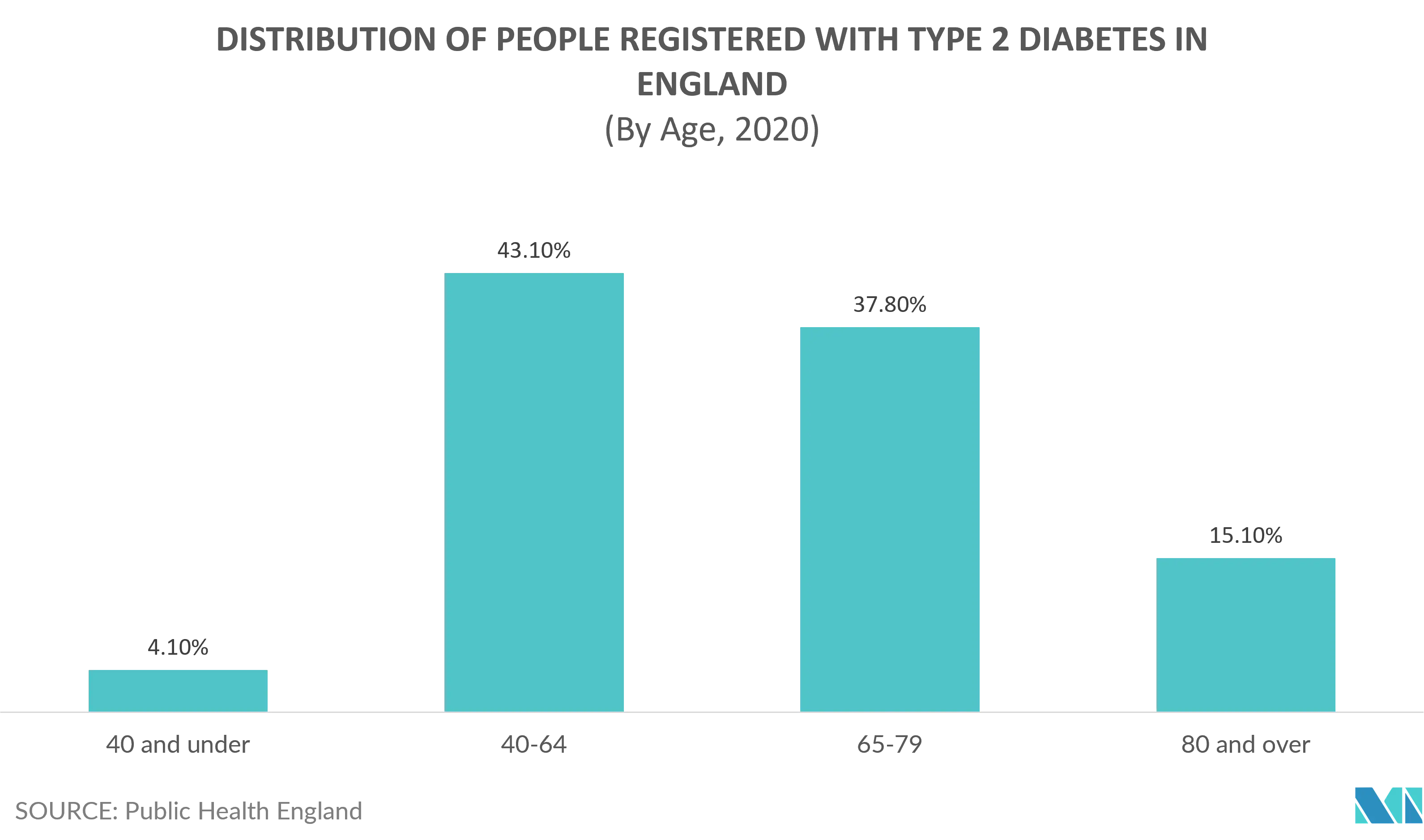
Europe Aseptic Packaging Industry Overview
The Europe Aseptic Packaging Market is highly competitive as there are multiple vendors operating in the domestic and international markets. The market appears to be moderately concentrated, with the players adopting various strategies such as product innovation, mergers, and acquisitions, among others, primarily to expand their reach and stay competitive in the market. Some of the major players in the market are Schott AG, DS Smith Plc, Tetra Pak International, among others.
- Jun 2020 - Greatview Aseptic Packaging, one of the largest suppliers of roll-fed packaging material for Tetra Pak aseptic filling machines, was established as a blank-fed producer, supplying sleeves compatible with SIG Combibloc filling machines.
- Jun 2020 - Ecolean's lightweight packaging solutions became part of HelloFresh's meal kits, offering customers a more sustainable and convenient packaging option. The companies aim to strengthen their commitment to sustainability. The Ecolean packages have been included in meal kits that have been distributed in Germany and Austria since April 2020, with Denmark and Sweden to follow.
Europe Aseptic Packaging Market Leaders
-
Schott AG
-
DS Smith Plc
-
Amcor Plc
-
Tetra Pak International S.A.
-
Greatview Aseptic Packaging Europe GmbH
*Disclaimer: Major Players sorted in no particular order
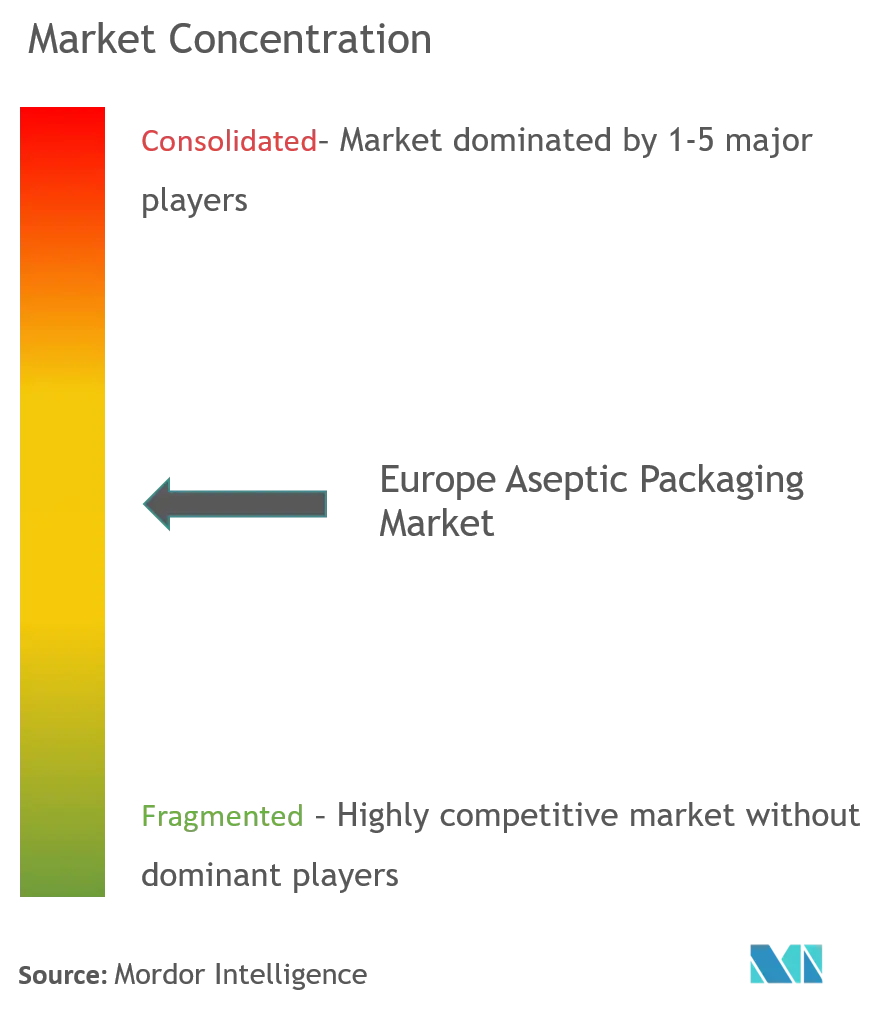
Europe Aseptic Packaging Market News
- August 2021 - Elopak announced Pure-Pak esense product line, which is an aseptic carton layered with aluminum that allows the manufacturer to reduce the carbon footprint by 28%. The package also facilitates full recyclability. Moreover, the package has been introduced for beverages such as fruit juices.
- April 2021- SIG launched paper u-bend straw for aseptic cartons in partnership with CAPSA Food's Central Lechera Asturiana, one of the leading Spanish milk brands. This shows the demand for aseptic cartons for milk packaging in the region.
Europe Aseptic Packaging Market Report - Table of Contents
1. INTRODUCTION
- 1.1 Study Assumptions and Market Definition
- 1.2 Scope of the Study
2. RESEARCH METHODOLOGY
3. EXECUTIVE SUMMARY
4. MARKET DYNAMICS
- 4.1 Market Overview
- 4.2 Industry Value Chain Analysis
-
4.3 Industry Attractiveness - Porter's Five Forces Analysis
- 4.3.1 Bargaining Power of Suppliers
- 4.3.2 Bargaining Power of Buyers
- 4.3.3 Threat of New Entrants
- 4.3.4 Threat of Substitute Products
- 4.3.5 Intensity of Competitive Rivalry
- 4.4 Opportunities in the MEA Aseptic packaging market
- 4.5 Assessment of COVID-19 impact on the industry
- 4.6 Technology Snapshot
5. MARKET DYNAMICS
-
5.1 Market Drivers
- 5.1.1 Increasing Demand to Reduce Cost of Cold Chain Logistics
- 5.1.2 Increasing Demand for Longer Shelf Life of Products
-
5.2 Market Challenges
- 5.2.1 Concerns over Environment and Recycling
- 5.2.2 Manufacturing Complications( for example increasing cost of raw materials) & Lower ROI
6. MARKET SEGMENTATION
-
6.1 Packaging Material
- 6.1.1 Metal
- 6.1.2 Glass
- 6.1.3 Paper
- 6.1.4 Plastics
- 6.1.5 Others
-
6.2 Packaging Type
- 6.2.1 Carton Boxes
- 6.2.2 Bags and Pouches
- 6.2.3 Cups and Trays
- 6.2.4 Bottles and Jars
- 6.2.5 Metal Cans
- 6.2.6 Plastic Cans
- 6.2.7 Composite Cans
- 6.2.8 Others
-
6.3 Country
- 6.3.1 Germany
- 6.3.2 United Kingdom
- 6.3.3 France
- 6.3.4 Russia
- 6.3.5 Italy
- 6.3.6 Rest of Europe
-
6.4 End-User Industry
- 6.4.1 Food
- 6.4.2 Beverage
- 6.4.3 Pharmaceutical & Medical
- 6.4.4 Others
7. COMPETITIVE LANDSCAPE
-
7.1 Company Profiles
- 7.1.1 Tetra Pal International SA
- 7.1.2 Amcor PLC
- 7.1.3 Schott AG
- 7.1.4 Ecolean Packaging
- 7.1.5 Reynolds Group Holdings
- 7.1.6 SIG Combibloc Group
- 7.1.7 WESTROCK COMPANY
- 7.1.8 DS SMITH PLC
- 7.1.9 Mondi PLC
- 7.1.10 Krones, Inc.
- 7.1.11 Reynolds Group Holdings
- 7.1.12 Greatview Aseptic Packaging
- 7.1.13 Sealed Air Corporation
- 7.1.14 Coesia S.P.A.
- 7.1.15 CFT S.P.A.
- *List Not Exhaustive
8. Investment Analysis
9. Future of the Europe Aseptic Packaging Market
** Subject To AvailablityEurope Aseptic Packaging Industry Segmentation
Aseptic packaging is a technique that is being used for the preservation of liquid and other particulate foods. The sterilization of food packaging materials and food contact surfaces is very crucial in the aseptic packaging system. In this process, the food is sterilized outside the primary container and then is placed in a previously sterilized container which is then sealed in an aseptic environment.
| Packaging Material | Metal |
| Glass | |
| Paper | |
| Plastics | |
| Others | |
| Packaging Type | Carton Boxes |
| Bags and Pouches | |
| Cups and Trays | |
| Bottles and Jars | |
| Metal Cans | |
| Plastic Cans | |
| Composite Cans | |
| Others | |
| Country | Germany |
| United Kingdom | |
| France | |
| Russia | |
| Italy | |
| Rest of Europe | |
| End-User Industry | Food |
| Beverage | |
| Pharmaceutical & Medical | |
| Others |
Europe Aseptic Packaging Market Research FAQs
How big is the Europe Aseptic Packaging Market?
The Europe Aseptic Packaging Market size is expected to reach USD 14.90 billion in 2024 and grow at a CAGR of 9.90% to reach USD 23.89 billion by 2029.
What is the current Europe Aseptic Packaging Market size?
In 2024, the Europe Aseptic Packaging Market size is expected to reach USD 14.90 billion.
Who are the key players in Europe Aseptic Packaging Market?
Schott AG, DS Smith Plc, Amcor Plc, Tetra Pak International S.A. and Greatview Aseptic Packaging Europe GmbH are the major companies operating in the Europe Aseptic Packaging Market.
What years does this Europe Aseptic Packaging Market cover, and what was the market size in 2023?
In 2023, the Europe Aseptic Packaging Market size was estimated at USD 13.56 billion. The report covers the Europe Aseptic Packaging Market historical market size for years: 2019, 2020, 2021, 2022 and 2023. The report also forecasts the Europe Aseptic Packaging Market size for years: 2024, 2025, 2026, 2027, 2028 and 2029.
Europe Aseptic Packaging Industry Report
Statistics for the 2024 Europe Aseptic Packaging market share, size and revenue growth rate, created by Mordor Intelligence™ Industry Reports. Europe Aseptic Packaging analysis includes a market forecast outlook to 2029 and historical overview. Get a sample of this industry analysis as a free report PDF download.



